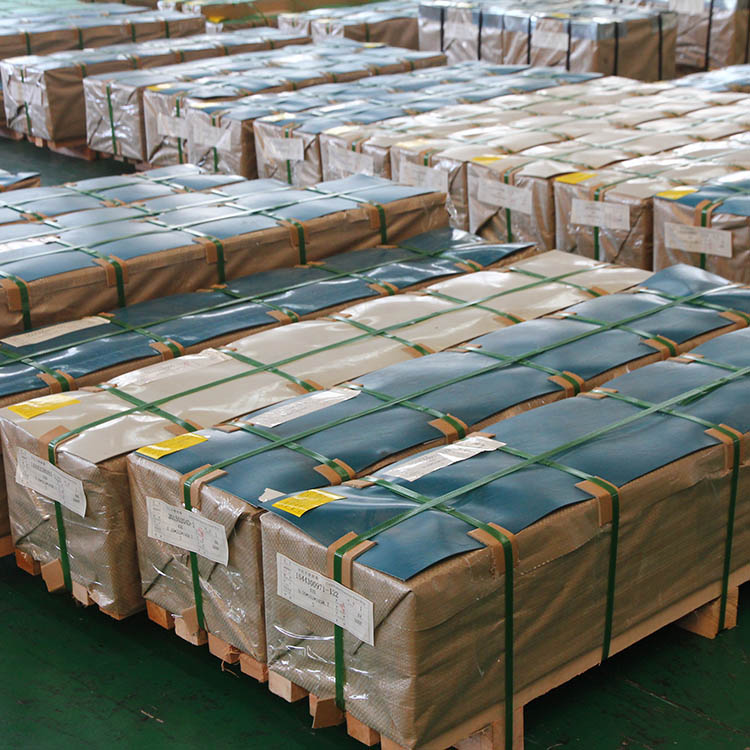

Stainless steel sheet is widely used due to its excellent corrosion resistance, but it may still rust under certain conditions. The main factors affecting the rust of stainless steel include the following aspects:
1. Chemical composition
Nickel and chromium content: The corrosion resistance of stainless steel mainly depends on its chemical composition, especially the content of chromium and nickel. Chromium can form a passivation film on the surface of stainless steel to prevent oxidation. Nickel enhances the corrosion resistance of stainless steel, especially in low temperature environments.
Carbon content: A higher carbon content in stainless steel may cause carbide precipitation, reducing its corrosion resistance. Therefore, low-carbon stainless steel usually has better corrosion resistance.
2. Environmental factors
Oxidizing environment: In an environment with high oxygen content, oxygen in the air will react with the surface of stainless steel sheet to form an oxide film. If the oxide film is damaged or incomplete, it may cause rust.
Humidity and moisture: Long-term exposure to a humid environment or a place with high moisture will easily form scale, corrosion products, and even electrochemical corrosion on the surface of stainless steel, leading to rust.
Chloride ions: Chlorides are extremely corrosive to stainless steel and can destroy the passive film on the surface of stainless steel, causing local corrosion or even pitting.
Acid-base environment: Strong acid or alkaline environment will accelerate the corrosion of stainless steel. High concentrations of acid or alkali are extremely corrosive to stainless steel, especially at high temperatures.
3. Temperature
High temperature: The corrosion resistance of stainless steel will decrease in high temperature environments, because high temperature will cause the oxide film on the metal surface to become thinner or even cracked, making it lose its corrosion resistance. Especially in environments above 800°C, some types of stainless steel may undergo chromium oxidation, leading to corrosion.
Temperature changes: Frequent temperature fluctuations may also cause stress corrosion cracking on the surface of stainless steel, increasing the risk of rust.
4. Mechanical damage
Scratches and collisions: If the surface of stainless steel sheet is scratched or mechanically damaged, the passive film on its surface will be destroyed, exposing the metal to the outside and making it prone to corrosion. This usually occurs when the stainless steel surface is not well protected.
Poor processing and welding: During processing and welding, local corrosion may occur due to high temperature and local oxidation, especially in the welded joints.
5. Electrochemical corrosion
Contact with different metals: When stainless steel is in contact with other metals, galvanic corrosion may occur. Galvanic corrosion occurs when two different metals come into contact and form a battery, and one of the metals will corrode. For example, when stainless steel comes into contact with metals such as iron or aluminum, the iron and other metals may corrode faster.
Corrosion battery: In an environment with different potentials, a local battery may form, causing local corrosion of stainless steel.
6. Accumulation of pollutants
Industrial pollutants: Pollutants in the air will combine with moisture to form acidic substances, which will corrode the surface of stainless steel. Especially in cities and industrial areas, the corrosion of stainless steel is often accelerated due to the high content of pollutants in the air.
Organic matter and bacteria: In some environments, accumulated organic matter or bacteria may also affect the surface of stainless steel, destroying its protective film and accelerating corrosion.
7. Surface treatment and cleanliness
Passivation: After the stainless steel sheet surface is passivated, a protective oxide film is formed to make it more corrosion-resistant. If the surface is not properly cleaned and treated, it may cause surface dirt and incomplete oxide film, thereby increasing the risk of rust.
Insufficient cleanliness: If there are impurities such as oil, dust, etc. on the surface of stainless steel, these pollutants will hinder the formation of surface oxide film, making stainless steel susceptible to corrosion.
8. Stress left after processing
During the stainless steel processing process, such as cutting, bending, stretching, etc., internal stress may be introduced into the stainless steel. These stresses may cause the formation of stress corrosion cracks, thereby accelerating rust.
In short, the rust of stainless steel sheets is usually the result of the combined action of multiple factors. In order to avoid rust, these factors need to be controlled, such as selecting suitable materials, avoiding contact with corrosive substances, improving surface treatment processes, and regular cleaning and maintenance. By taking appropriate protective measures, the service life of stainless steel products can be extended.
